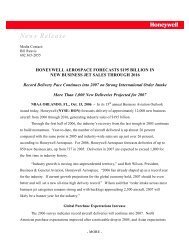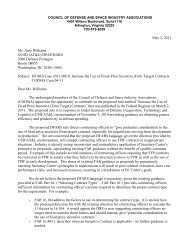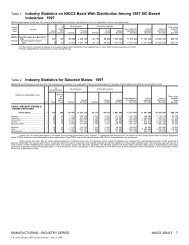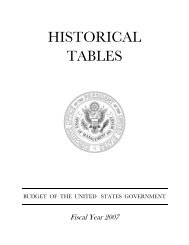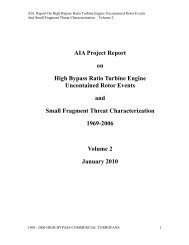AIA Executive Report - Aerospace Industries Association
AIA Executive Report - Aerospace Industries Association
AIA Executive Report - Aerospace Industries Association
You also want an ePaper? Increase the reach of your titles
YUMPU automatically turns print PDFs into web optimized ePapers that Google loves.
Q&A<br />
With Terry A. Yonkers<br />
<strong>AIA</strong> sat down to talk about alternative fuels in aviation with Terry A. Yonkers,<br />
Assistant Secretary of the Air Force for Installations, Environment and Logistics.<br />
The Air Force Energy Plan calls for enhancing security by increasing energy<br />
supplies, including developing alternative fuels. Such fuels reduce dependence<br />
on foreign sources and cut greenhouse gas emissions. The Air Force, at the<br />
administration’s direction, is taking a leading role in testing alternative fuels<br />
for commercial as well as military use. In June, history was made when a<br />
Boeing AH-64D Apache helicopter in service with the Royal Netherlands Air<br />
Force became the first rotorcraft to fly on a 50/50 blend of bio-kerosene and<br />
traditional jet fuel. (see cover)<br />
Terry A. Yonkers, Assistant Secretary of the Air<br />
Force for Installations, Environment and Logistics<br />
<strong>AIA</strong> What are your goals for the use of alternative aviation fuel by the Air Force<br />
Yonkers Our goal is to be ready to cost competitively purchase 50 percent of our aviation fuel from alternative<br />
sources by 2016. We’re in the process of certifying a number of platforms to fly on a 50/50 mixture<br />
of both synthetic fuels and biofuels. Our target dates to achieve these objectives are 2011 and 2013,<br />
respectively.<br />
<strong>AIA</strong><br />
Yonkers<br />
What aircraft will be using blended fuels first<br />
We’ve already flown many platforms on a 50-50 blend with synthetic fuel and JP-8, including the B-1,<br />
B-52, C-17, F-4, F-15, F-22, T-38, C-130 and the C-5. We’ve also flown the A-10 Thunderbolt on a<br />
50-50 blend with camelina oil biofuel. I asked the major who flew this plane about his experience and<br />
he said, “I couldn’t tell the difference.”<br />
<strong>AIA</strong> Are there any distinctions between using alternative fuels in military as opposed to commercial aircraft<br />
Yonkers Jet-A and JP-8 are pretty close. We do things a little differently than commercial companies with the<br />
additives we put in the JP-8. What we’re really seeking is a drop-in fuel that can take the place of the<br />
JP-8 with the same specifications and performance. As we look down the road, the hope is the mixture<br />
would change from 50-50 to 60-40 or 70-30. At some time we may even be able to fly on 100 percent<br />
biofuel.<br />
<strong>AIA</strong> How long will it take for biofuels to be used widely in commercial aviation<br />
Yonkers I think it’s going to be market driven. The Air Force and DOD are relatively small players in the overall<br />
consumption of aviation fuel. We’re probably about eight percent of total aviation use in the USA.<br />
If you compare overall fuel use for transportation in the nation, we are less than one percent. So in<br />
terms of being able to drive the market there will be other folks, in particular commercial aviation, who<br />
will drive the market. But if we can act as the catalyst, to show that we are ready to use biofuels and<br />
synfuels, we are hoping that we can generate interest in the private sector to invest in the infrastructure,<br />
manufacture and production capabilities that will start the ball rolling.<br />
4 aerospace industries association




